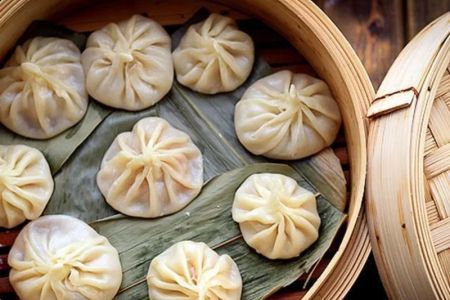Who Owns P.F. Chang's? A Look at the Ownership of this Iconic Restaurant Chain
One of the most well-known names in the world of Asian-inspired dining, P.F. Chang's has been delighting customers with its bold flavors and welcoming atmosphere for decades. But have you ever wondered who owns P.F. Chang's? Understanding the ownership behind such a popular brand can offer intriguing insights into its evolution, the strategies that drive its success, and how it continues to thrive in the competitive restaurant industry. In this article, we'll explore the history of P.F. Chang's, its ownership changes, and the current structure of the company.
1. The Beginnings of P.F. Chang's
P.F. Chang's was founded in 1993 by Paul Fleming and Philip Chiang, the latter of whom brought his expertise in Asian cuisine to the restaurant’s unique concept. The idea was to create an upscale Chinese dining experience that was both accessible and elegant, combining bold flavors with an inviting atmosphere. The first P.F. Chang’s location opened in Scottsdale, Arizona, and quickly gained a loyal following thanks to its distinct menu and modern approach to Asian-American cuisine.
The restaurant’s name, which combines the initials of Paul Fleming and the surname of Philip Chiang, was designed to reflect the fusion of both founders' backgrounds. Since its inception, P.F. Chang's has expanded worldwide and built a brand synonymous with quality food, stylish ambiance, and friendly service.
2. Early Ownership and Expansion
Initially, P.F. Chang's was privately owned, but as the restaurant chain grew, it attracted outside investment. In 1999, the company went public and began trading on the NASDAQ stock exchange under the ticker symbol “PFC.” The early years were marked by rapid growth, with P.F. Chang’s opening locations across the United States and expanding internationally. At its peak, the company owned and operated hundreds of restaurants worldwide, including in Asia, Europe, and the Middle East.
The company’s public status allowed it to raise funds for further expansion and solidify its position as a leading brand in casual dining. However, by the mid-2000s, it faced increasing competition from other chain restaurants and changing consumer preferences. Despite this, P.F. Chang's maintained its reputation as a top choice for those seeking a refined yet casual dining experience.
3. Ownership Changes: From Public to Private
In 2012, P.F. Chang's made a major shift in its ownership structure. The company was acquired by Centerbridge Partners, a private equity firm, for approximately $1.1 billion. This move effectively took the company private again, ending its tenure on the stock exchange. The shift in ownership was largely driven by a desire to restructure and address challenges that came with being publicly traded, such as the pressure for quarterly earnings growth.
Centerbridge Partners, which has a history of investing in consumer brands, sought to revitalize the P.F. Chang’s brand and restore it to profitability. This included introducing new menu items, revamping existing locations, and even focusing on expanding the restaurant’s presence in international markets. Under private ownership, P.F. Chang’s had more flexibility to adapt to changing market conditions without the scrutiny of public shareholders.
4. Current Ownership: A Look at the Present
As of today, P.F. Chang's is owned by a group of private investors, with Centerbridge Partners still holding significant influence. However, the company has also partnered with other investors, including TriArtisan Capital Advisors and Paulson & Co. These investors are focused on continuing P.F. Chang’s legacy while driving innovation in both its dining and marketing strategies.
The company has made significant strides in adapting to modern dining trends, including offering more vegetarian and vegan options, enhancing its takeout and delivery services, and integrating digital technology to streamline customer orders. Additionally, P.F. Chang's has expanded its retail presence, offering packaged products such as frozen meals and sauces, allowing the brand to reach even more customers outside of its restaurants.
5. The Future of P.F. Chang’s
With its rich history and strong presence in the restaurant industry, P.F. Chang’s is poised for continued growth. The company’s future looks promising, as it continues to innovate and adapt to the evolving tastes of consumers. From offering new menu items to expanding its digital presence, P.F. Chang's is looking to maintain its reputation as one of the leading casual dining chains in America and beyond.
The brand has also embraced new marketing strategies, including partnerships with influencers, engaging in social media campaigns, and focusing on sustainability. The company’s commitment to excellence and customer satisfaction remains at the heart of its operations, ensuring its continued success in a competitive marketplace.
6. Why P.F. Chang's Stands Out
P.F. Chang's isn’t just a restaurant—it’s a dining experience. The brand’s unique combination of upscale Asian-inspired cuisine, a welcoming atmosphere, and a focus on high-quality ingredients has helped it maintain its popularity for nearly three decades. Its ownership journey reflects its adaptability and determination to stay relevant in a constantly changing industry. Whether it’s the exceptional food, the stylish decor, or the renowned service, P.F. Chang’s has earned its place as a top destination for dining.
If you're ever in the mood for an unforgettable meal at one of the most iconic restaurants in the world, P.F. Chang’s should be at the top of your list. Interested in learning more or visiting one of their locations? Consider checking out the latest offerings and booking your next dining experience at Chinese Food.







